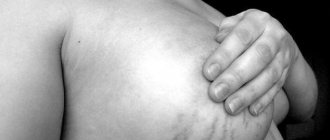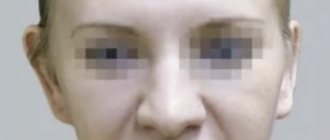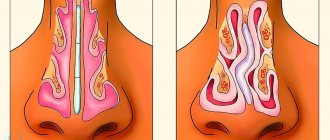Mammoplasty or breast surgery is one of the most popular and sought after operations.
- Why complications arise
- Types of complications Swelling of the chest or abdomen
- Seromas and hematomas
- Increased body temperature and inflammation
- Pain after mammoplasty
- Keloid scars
- Loss of skin sensitivity
- Capsular contracture
- Damage to the implant
- Breast deformities and their unnatural appearance
Every year, many women come to surgeons wanting to make their bust bigger. Intervention techniques, as well as the implants used, are constantly being improved. However, mammoplasty remains a full-fledged operation, after which, theoretically, complications may arise, especially if the patient ignores the recommendations of doctors during the rehabilitation period.
Types of complications
Complications can occur after any intervention on the mammary gland. They can be divided into two large groups:
- general - caused by the surgical intervention itself;
- specific - related to the implant and features of the anatomy of the mammary gland.
The first group includes the following problems:
- pain;
- swelling;
- seroma or hematoma;
- increased body temperature;
- keloid scars;
- changes in the sensitivity of the nipples or other areas of the breast;
- non-physiological discharge.
Specific complications include:
- capsular contracture;
- cracks or rupture of the implant;
- skin ripples (ripping);
- deformations of the mammary glands;
- rare complications.
Swelling of the chest or abdomen
Like pain, swelling of the breast and sometimes the abdomen after mammoplasty is a normal reaction to surgery. If it persists for more than three months or increases unexpectedly, a complication is said to have developed. Most often its cause is:
- wearing compression garments for insufficiently long periods;
- exposure to heat or ultraviolet radiation in the early postoperative period (hot shower, sauna, sun exposure, etc.);
- early physical activity.
IMPORTANT! Wearing a special bra, as well as following your doctor’s recommendations on physical activity, drinking regimen and salt intake will help speed up the resorption of swelling.
Seromas and hematomas
Seromas and hematomas are areas of fluid accumulation: tissue or blood. Unlike edema, they have more or less clear boundaries and, as a rule, are located in the lower part of the mammary gland, since they move there under the influence of gravity. The skin over the gray area has a normal color. When a hematoma develops, the accumulation of blood colors it in various shades of red, bluish or purple. During palpation, the woman will notice slight pain.
Small seromas and hematomas go away on their own. Larger lesions may fester. Only a doctor can correctly assess the degree of danger and prescribe treatment! Depending on the severity of the complication, drug therapy or drainage of the formation is prescribed. In this case, excess fluid is pumped out using a long needle.
Increased body temperature and inflammation
Fever is not uncommon after mammoplasty, especially if implants were installed during the process. This is a normal reaction of the body to tissue damage and the introduction of a foreign body. An increase in temperature up to 38 degrees in the first days after surgery is considered acceptable. It is necessary to sound the alarm if:
- The thermometer reading exceeded 38 degrees;
- fever persists for more than 14 days;
- the temperature dropped and then rose sharply.
As a rule, such changes indicate the development of an inflammatory process in the surgical area. It can also cause the following symptoms:
- redness of the breast;
- swelling of certain areas of the breast;
- sharp pain when touched;
- discharge of clear fluid or pus from the postoperative scar or from the nipple.
The body can react to inflammation very sharply, including nausea and vomiting, dizziness, skin rashes and even loss of consciousness. Such problems arise in very advanced cases, when patients ignore the doctor’s recommendations and do not contact him when the first signs appear.
Treatment is prescribed by a doctor depending on the severity of the process. In severe cases, repeated surgery to remove the implant is required.
Pain after mammoplasty
Pain itself is a natural reaction of the body to surgery. It is associated with tissue damage, as well as their stretching if an implant was installed. The intensity of sensations may vary, as it depends on the type of access, the volume of intervention, as well as the individual sensitivity of the body.
The pain is most severe in the first days, then gradually subsides. Most women note the complete disappearance of discomfort 2-3 weeks after the intervention. In this case, it cannot be called a complication.
If the pain suddenly becomes stronger, is accompanied by an increase in temperature or other symptoms, it indicates the development of a pathological process!
Keloid scars
Doctors at the GALAXY Beauty Institute make incisions so that the scars are not noticeable after healing. Normally, they are a thin, light line that is visible only upon careful examination. In some cases, the scar after healing remains pronounced, brightly colored and even bulges above the surface of the skin.
The cause of complications may be:
- individual tendency to form keloid scars;
- prolonged wound healing;
- excessive tissue tension around the healing incision;
- early use of absorbable creams.
In some cases, complications can be prevented with the help of ointments or with the help of a cosmetologist (for example, laser resurfacing).
IMPORTANT! If the patient already has keloid scars from other operations, it is better to refuse mammoplasty.
Loss of skin sensitivity
Loss of sensitivity in certain areas of the skin after mammoplasty is quite common. It involves cutting small nerves during surgery, especially if the incision is around the areola. In most cases, sensitivity is restored 2-6 months after the intervention. To speed up this process, doctors may prescribe B vitamins, antioxidants, or physical therapy.
Capsular contracture
This complication is associated with the development of scar tissue. This process, like many others, is natural, but in some women it is so pronounced that the implant becomes severely contracted and deformed. There are four degrees of capsular contracture:
- 1st degree: breasts are natural visually and to the touch;
- 2nd degree: there are no visual changes, a compaction is detected when palpated;
- 3rd degree: the shape of the mammary gland is changed, the tissue is hard to the touch;
- Grade 4: the gland is severely deformed and very dense to the touch, pain often occurs.
Severe contracture (grade 3-4) requires removal of the implant. Taking vitamin E, regular breast massage, and physical therapy will help reduce the risk of complications.
Damage to the implant
There are many rumors surrounding this complication. Previously, surgeons actively used prostheses filled with a solution of table salt or liquid silicone, which, indeed, cracked over time and spread inside the tissues. That is why it was recommended to change implants every five years.
Surgeons at the GALAXY Beauty Institute use only modern prostheses equipped with a durable two-layer shell. It is elastic and does not become damaged even after many years of use. The only reason for damage to the walls can be a strong physical impact due to injury, but even in this case, the silicone does not leave the cavity in which the prosthesis is located.
Breast deformities and their unnatural appearance
Selecting the shape and size of an implant is one of the important tasks of a plastic surgeon. At the GALAXY Beauty Institute, computer modeling is carried out, which allows you to visualize the approximate appearance of the bust after surgery.
IMPORTANT! If you do not take into account the age and anatomical features of a woman, the breasts may become deformed or simply look unnatural.
Here are the most common problems:
- sagging breasts due to loss of skin elasticity; the problem is solved by installing an implant under the muscle or performing a repeat operation with skin tightening;
- implant contouring for slender girls; the deficiency is eliminated by the lipofilling procedure;
- displacement of the implant when wearing compression garments for insufficiently long time; complication requires reoperation;
- too wide a distance between the glands or their visual fusion (“monoborax”, synmastia) due to incorrect selection of the implant or incorrect formation of the pocket; if desired, it can be eliminated by repeated surgery;
- skin ripples (ripping or “washboard effect”) - waves on the skin that change depending on the position of the body; the problem is solved by replacing the implant or breast lipofilling procedure.
How to treat gray?
Treatment of seroma after breast augmentation can be either surgical or medical. The most effective is a combination of both methods, provided that the seroma requires it.
The essence of surgical treatment is to install drainage with active aspiration for continuous removal of serous fluid. Drainage can remain in place for 2-5 days after installation. The amount of discharge is used to determine the possibility of drainage removal. If there is little discharge, the drainage is removed.
Drug treatment can be either independent or complementary to surgical treatment. As an independent method of treatment, it is used for small seromas in cases where the installation of active drainage is impractical. Among the drugs, non-steroidal anti-inflammatory drugs (such as Diclofenac), broad-spectrum antibiotics, as well as steroidal anti-inflammatory drugs (such as Diprospan) firmly occupy the first positions. The duration of drug treatment can vary from 5 to 14 days.
| Experience shows that timely treatment guarantees almost 100% recovery without consequences for the health and aesthetic result of the operation. The incidence of seroma after breast augmentation is 0.2-1%. This largely depends on the surgeon. Despite the low percentage, both the patient and the surgeon must be attentive in the first month after surgery so as not to miss the development of such a complication as seroma of the implantation pocket. |
Rare complications
Rare complications of mammoplasty include:
- allergy to the implant (manifested by skin rashes and swelling, requires removal);
- calcium deposits in the implant area (removed only if the defect is large);
- atrophy of gland tissue;
- damage to the milk ducts and inability to breastfeed after plastic surgery.
Breast surgery is a full-fledged operation that requires careful preparation, skillful execution, as well as careful adherence to the doctor’s recommendations during the rehabilitation period. In this case, the risk of complications will be minimal, which means that a beautiful bust will delight the patient all her life.
When does seroma appear?
Lifetime warranty on implants
There is no specific time interval between surgical intervention and the formation of seroma. It is difficult to name the factors that stimulate fluid accumulation. However, the general likelihood of developing this anomaly is as follows: the greater the extent of surgery, the greater the likelihood of developing seroma. Seroma can appear in any part of the body that has been injured or undergone surgery.
It is diagnosed during a mammological examination, but, as a rule, the accumulation is clearly visible to the naked eye and is easily palpable.
Clinical picture and diagnosis
Most often, a hematoma forms in one mammary gland, due to which visible asymmetry develops. Soft tissues become painful when pressed and feel hot to the touch. The skin over the hematoma may change in color, but may remain normal. Other nonspecific symptoms include weakness, malaise, and decreased performance.
To identify a hematoma, as a rule, it is enough to analyze the patient’s clinical manifestations and complaints, as well as perform an ultrasound of the mammary glands and a general blood test.
In some cases, the surgeon may prescribe additional diagnostic methods.
Why go to the plastic surgeons of the Pirogov Clinic in St. Petersburg for the best results from mammoplasty?
Plastic surgeons of the clinic named after. N.I. Pirogov has accumulated successful experience in aesthetic and reconstructive breast correction surgeries since 1999. We perform all types of mammoplasty: breast augmentation (endoprosthetics), lift (mastopexy), reduction mammoplasty, correction of gynecomastia, asymmetry and other defects. By contacting us, you can be confident in the high standards of preoperative examination, first-class aesthetic results and the professionalism of our doctors. On our website you can view the portfolio of each plastic surgeon and read reviews about him.
We offer our patients:
- Services of the best plastic surgeons in St. Petersburg, whose professional successes are annually noted by independent experts and industry leaders, as well as by the patients themselves.
- Promotions and special offers (all inclusive) at affordable prices;
- Free face-to-face consultations with plastic surgeons for primary patients.
- Availability of all highly specialized medical specialists whose assistance may be required in one place.
- Our own laboratory, which allows you to quickly obtain accurate diagnostic results - we can send the results of preoperative examinations by email, if that is more convenient for you.
- Operating rooms equipped with new generation medical equipment.
- High comfort and luxury rooms.
- The ability to consult with plastic surgeons remotely using the Online Clinic service.
- Interest-free installment plan for plastic surgery.
- Organizational assistance from a regional manager for patients from other cities.










